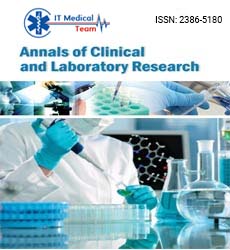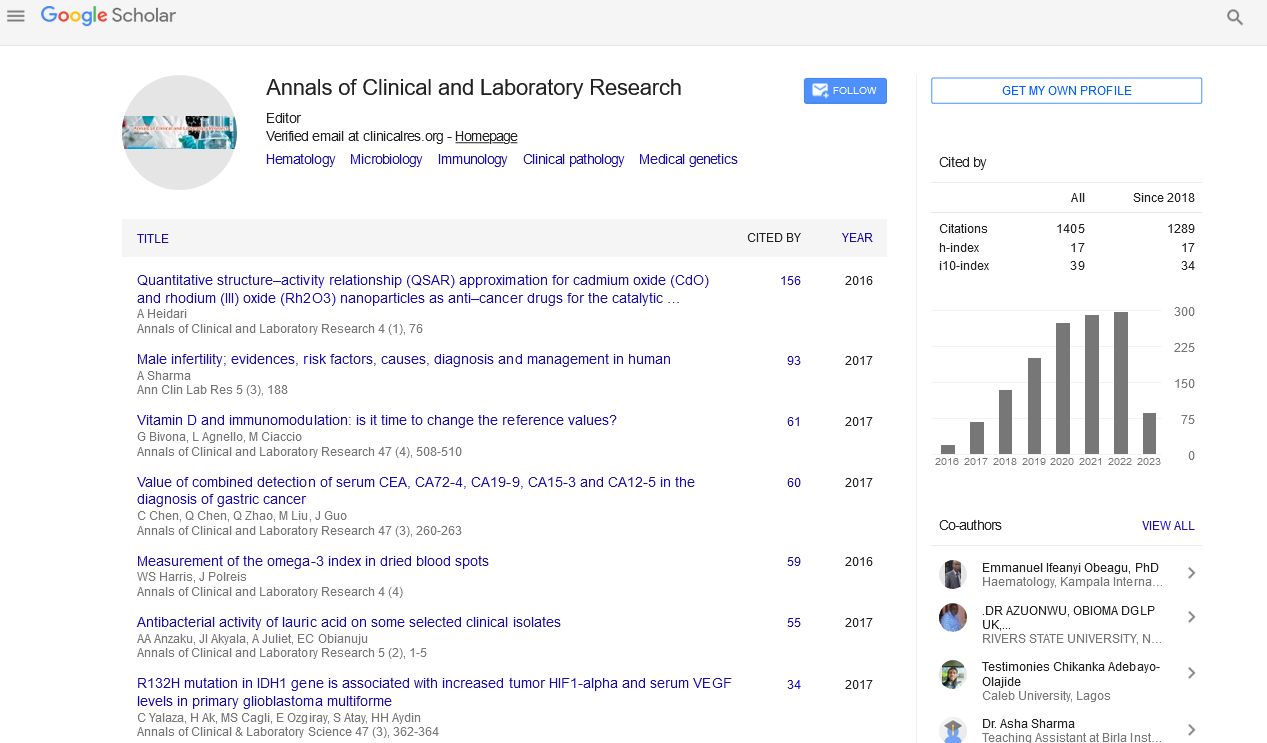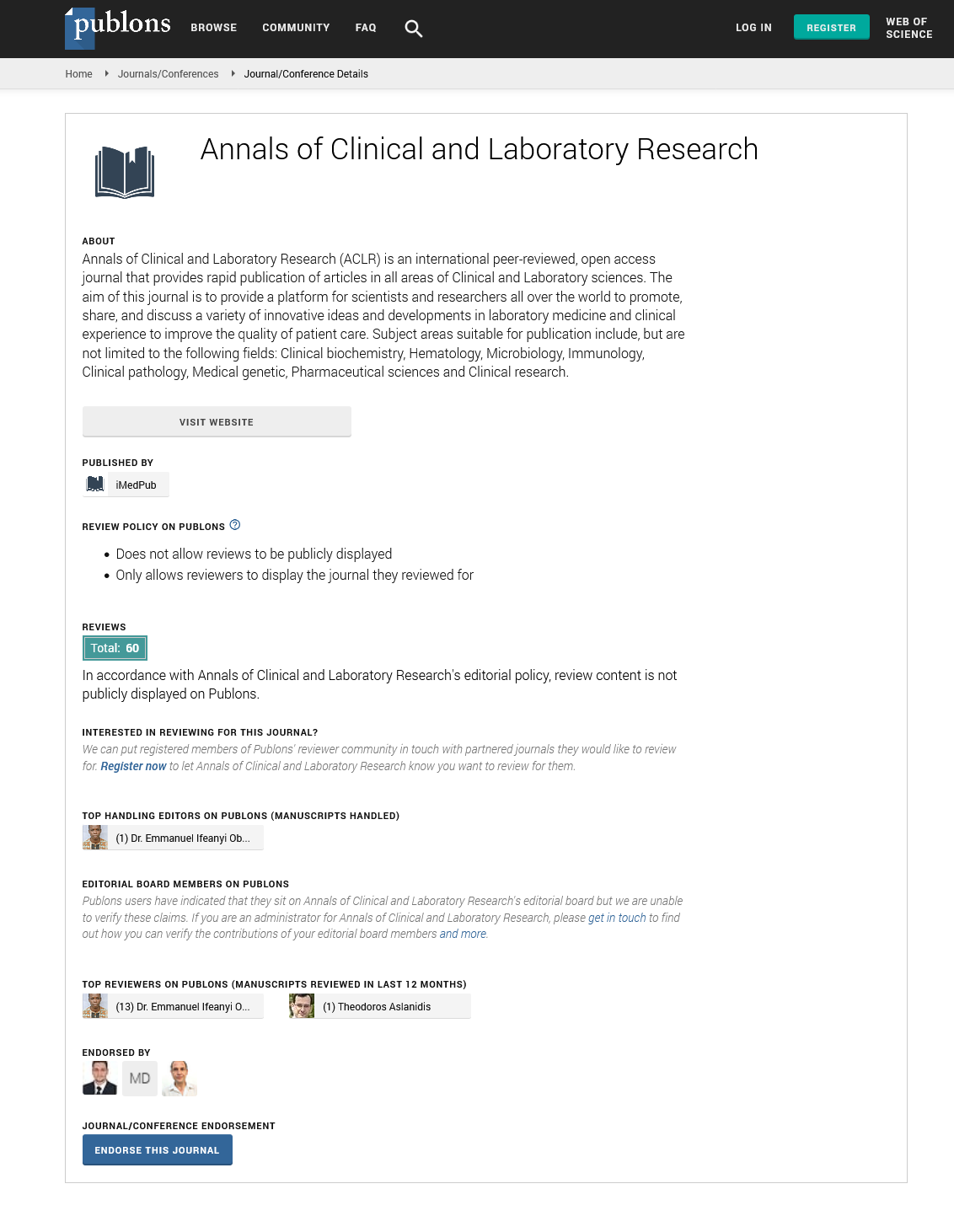Mini Review - (2022) Volume 10, Issue 11
Generally Speaking, Enzalutamide and Androgen Deprivation Therapy Improves Survival of Men with Metachronous Metastatic Hormone-Touchy Prostate Cancer
Christopher Alkab*
School of Pharmacy, University of Waterloo, Kitchener, Ontario, Canada
*Correspondence:
Christopher Alkab, School of Pharmacy, University of Waterloo, Kitchener, Ontario,
Canada,
Email:
Received: 08-Oct-2022, Manuscript No. IPACLR-22-13321;
Editor assigned: 10-Oct-2022, Pre QC No. IPACLR-22-13321(PQ);
Reviewed: 24-Oct-2022, QC No. IPACLR-22-13321;
Revised: 02-Nov-2022, Manuscript No. IPACLR-22-13321(R);
Published:
09-Nov-2022, DOI: 10.36648/2386- 5180.22.10.442
INTRODUCTION
Compared to men who develop recurrent disease, men who initially have confined prostate cancer and later develop metachronous metastases have a better prognosis, and they frequently have a low weight of infection on standard imaging. Some patients have diseases that can benefit from metastasis-coordinated treatment because there isn't any proof that combining foundational treatment for lymph node or bone metastases is beneficial. With 34 mo of middle development for survivors, we present data for patients from the ENZAMET preliminary's interval investigation who were provisionally assigned "M0" at the starting finding. According to CHAARTED standards, 312 (28%) of the 1125 enlisted patients, or 205 (66%) of the 312 patients who were labelled M0 at the end, had low-volume illness at the time of passage. With the addition of enzalutamide, the risk ratio for overall survival, or at least HR(OS), for all patients with metachronous metastatic chemically touchy prostate disease was 0.56 (95% confidence interval [CI]: 0.29-1.06) and for the low-volume subset, the HR(OS) was 0.40 (95% CI: 0.16-0.97) [1].
While some men have far-off spread at the time the malignant growth is examined, many men present with prostate disease that has spread to distant locations past the prostate organ years after their underlying analysis and therapy. In general, men whose disease recurs long after the underlying cause frequently live significantly longer than men whose malignant growth has initially been found to have spread to too many distant locations. In this study, we provide compelling evidence that supplementing testosterone concealment with drugs like enzalutamide or apalutamide increases the endurance of men whose disease recurs years later [2].
Prostate cancer is the most prevalent disease in men, and a large percentage of patients have been identified at an advanced, incurable stage. Androgen deprivation therapy (ADT) is the gold standard of care (SOC) for the treatment of metastatic prostate disease (ADT). However, all patients with metastatic disease eventually undergo metastatic mutilation to promote safe prostate malignant growth (mCRPC). ADT was initially used as a monotherapy, but the field of treatment for metastatic chemically sensitive prostate cancer (mHSPC) has shifted toward combining ADT with new androgen receptor flagging inhibitors (ARSi) or taxane-based chemotherapy, and will probably soon extend to trio treatment regimens. Predictive biomarkers to identify patients who would most benefit from treatment from a cytotoxic specialist, an ARSi, or another designated specialist are still needed [3].
ProBio is a biomarker-driven multiarm, open-name, many task randomised, flexible stage preliminary. The objective patient population consists of patients with first-line mCRPC and recurrent mHSPC. If a patient has mCRPC after receiving foundational treatment for mHSPC or nonmetastatic CRPC outside of ProBio, they can enter the mCRPC period of ProBio quickly. However, under the cautious guidance of the patient's treating physician, patients with movement who had recently undergone treatment during the mHSPC period of ProBio may choose to forego the preliminary [4].
Consistently, the disagreement reveals gaps in the evidence. There are many unanswered questions at APCCC 2019 due to the complexity of cutting-edge prostate malignant growth treatments and the requirement for strong, clinically applicable preliminary data that can fill current gaps with incontrovertible level proof. Our examination of these unresolved disagreements and ongoing preliminary issues offers a helpful framework, emphasising areas where a future agreement might be reached soon. Future testing topics may be identified and focused on by educators with the aid of this survey.
REFERENCES
- Clarke NW, Ali A, Ingleby FC, Amos CL, Attard G, et al. (2019) Addition of docetaxel to hormonal therapy in low- and high-burden metastatic hormone sensitive prostate cancer: long-term survival results from the STAMPEDE trial. Ann Oncol 30:1992-2003.
Indexed at, Google Scholar, Cross Ref
- De Bleser E, Jereczek-Fossa BA, Pasquier D, Morton JP, Jeukendrup A, et al. (2021)Metastasis-directed therapy in treating nodal oligorecurrent prostate cancer: a multi-institutional analysis comparing the outcome and toxicity of stereotactic body radiotherapy and elective nodal radiotherapy. Eur Urol 76:732-739.
Indexed at, Google Scholar, Cross Ref
- Eiber M, Kroenke M, Wurzer A, Ulbrich L, JooÃ? L, et al. (2020) 18F-rhPSMA 7 PET for the detection of biochemical recurrence of prostate cancer after radical prostatectomy. J Nucl Med 61:696-701.
Indexed at, Google Scholar, Cross Ref
- Fossati N, Suardi N, Gandaglia G, Bravi CA, Soligo M, et al. (2019)Identifying the optimal candidate for salvage lymph node dissection for nodal recurrence of prostate cancer: results from a large, multi-institutional analysis. Eur Urol 75:176â??183.
Indexed at, Cross Ref






